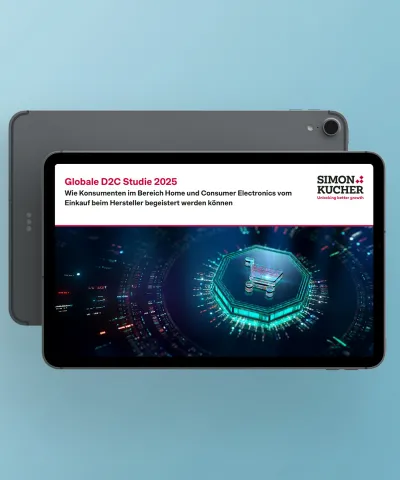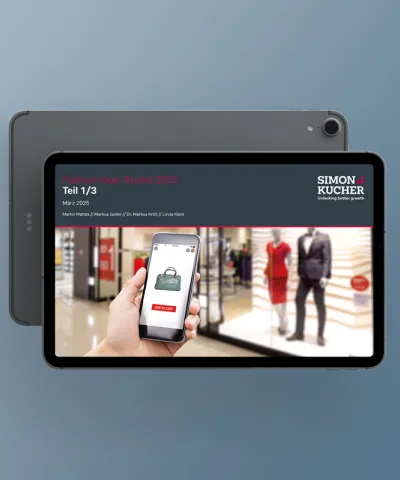COVID-19 led HCP and payer engagement go from face-to-face to digital overnight. While biopharma impressively met digital transformation head-on, is it still proving successful today? We explain why biopharma must optimize its digital capabilities, and announce our new webinar to help businesses grow.
The best biopharmaceutical commercial teams have always been customer-driven and able to quickly adapt to market changes, delivering key evidence and resources so that payers can provide access, and healthcare professionals (HCPs) can best treat patients. Yet, as traditional means of engagement proved difficult during COVID, it was only companies with a well-structured digital setup and competences that could quickly shift to online channels and, as a result, continue to engage HCPs and payers effectively.
While digital engagement existed before COVID, it wasn’t widely adopted. The pandemic pushed biopharma to switch gears, forcing them to complete years of digital transformation in just a couple of months. It was a necessary and long-awaited shift in the industry, but now that the digital capabilities are being put in place, biopharma must learn how best to leverage them to engage HCPs and payers.
In this brief teaser for our upcoming webinar will address: 1. digital HCP engagement, 2. digital payer and account engagement, and 3. how to accelerate digital adoption.
1. Digital HCP engagement has boomed – yet there are still challenges to be addressed
Up to now, there have been many reports stating the extent to which HCPs are embracing this change, sometimes preferring it to traditional in-person engagement, which tends to consume more resources. Yet, our recent study has produced some surprising results.
In line with current thought, our study (conducted in the US and EU, and covering four HCP specialties) confirmed the difficulties prescribers and HCPs faced pre-COVID, with 39 percent reporting they had restricted or limited access for biopharma reps to clinics and hospitals during that time. However, while we found that 90 percent of HCPs find value in engaging with biopharma, a staggering 71 percent would prefer to return to face-to-face engagement only.
This proves that while the digital transformation in biopharma was a long-awaited impressive feat, there remain crucial gaps that companies need to address if they are to optimize their customer engagement and grow. Moreover, almost half (46 percent) of HCPs have a negative experience of being engaged remotely. Moreover, out of 12 content categories, brand-related content is the only one where biopharma delivers more than what is needed.
Therefore, in order to differentiate and boost market shares, biopharma has to focus on delivering significant improvement in digital engagement. In our webinar we will address how digital capabilities can be improved and leveraged to engage HCPs and payers more effectively.
2. To what extent is digitalization leveraged to drive in particular payer engagement?
Biopharma has been through a significant shift from traditional high-volume blockbuster drugs, to high-value specialty and niche medicines. The prescription of these products is influenced by various additional stakeholders. For instance, subnational payers need to provide access, while hospital budget holders (besides the prescriber) need to be convinced. This requires a coordinated engagement approach across the multiple stakeholder groups.
While biopharma has done significant work to boost HCP promotion digitally, progress still needs to be made when it comes to coherently engaging other stakeholders in the digital sphere. These key stakeholders include: payers at national and local level, hospital administrative staff, and thought leaders.
The challenge for biopharma, then, is understanding how to leverage digital to create more coherence and impact when engaging diverse stakeholders on various key accounts. All the while, keeping the goal of achieving broad subnational access fast while limiting additional rebates on a net level in mind. Where the goal of commercial success is achieved through broad subnational access with limited additional rebates on net level and fast uptake and broad usage.
Below are some issues that are needed to be overcome:
- Delayed time to local patient access
A lack of clearly defined roles and responsibilities, transparent action planning, and reporting can play a role here. In many markets, high-cost specialty products involve multiple stakeholders, so a coordinated approach is key to success.
Digital is an opportunity to define clearer processes and achieve closer coordination, collaboration, and alignment between functions (e.g., marketing, access, medical and sales), as well as between local and global teams while staying compliant.
- List-net spreads have increased in many cases
This is due to the fact that subnational stakeholders at regional or hospital level often require additional rebates. To improve this, account teams consisting of marketing, access, medical, and sales can adopt digital processes and tools to enhance coordination within account teams, to optimize account management as well as value messaging.
Furthermore, digital tools can support monitoring and increase transparency. This can help to manage net prices and reduce the additional rebates given to subnational stakeholders.
3. COVID has demonstrated that digital is required to operate resiliently – what can be done to accelerate adoption of the digital model?
Across many biopharma technology companies, infrastructure and tools (such as CRM, websites, marketing automation, emails, and business intelligence) have traditionally been established and managed locally. This leaves companies with the challenge of figuring out how to develop and launch global enterprise digital platforms that deliver integration, easy access to data, and a seamless end-user experience.
To manage local back-end systems, such as finance, HR, and supply chain processes, most companies have moved to a corporate platform. To a large extent, these systems have been focused on operational efficiencies and savings, while development and implementation has been governed by global functions.
When it comes to infrastructure leveraged to engage customers (CRM, websites etc.), creating alignment around these enterprise solutions is often more complex due to the need to adapt to differences in local markets.
We advise clients, therefore, to align on what benefits digital can bring to the business in order to create a North Star that everyone can follow. These digital benefits typically fall into four buckets (but there can be more):
- Creation of coherent, more relevant, and larger volumes of content across all channels
- Ability to engage customers (both on and offline) in a targeted way with wider reach
- Seamless data extraction to generate continuous customer interaction insights
- Delivering savings and efficiencies in content production, infrastructure set up, and management
After your organization has aligned on what benefits to realize, we recommend developing clear change drivers that will help with internal acceptance and digital adoption. This is easier said than done, but here are our key recommendations:
- Have end users in mind – Make it easy and valuable for your internal users to adopt the tools and technology required. Sales reps typically see CRM as a control system, so how can this perception be changed so that the CRM is seen as a valuable tool? A lot of digital transformation is people-based, where effective change management is key. Make it easy for your teams to transition
- Choose digital industry standards and harmonize to the extent possible – It has been proven many times that too much customization slows down implementation, creates frustrations, and drives costs up. Standardization and harmonization make it easier to integrate systems, extract data to generate insights, and more efficient and professional to train end users
- Have a clear governance set up – Define the roles and responsibilities for: Global IT, as well as global and local commercial teams. Clarity on what global development and implementation means vs. local adaptation and execution is key
- Make digitalization top of your leadership agenda – Leadership is key to driving change. When leadership is leading the way, encourage use and recognize progress it will serve as an accelerator of your company’s digital journey
Key Takeaways
The key to successfully engage payers and HCPs in the modern age, lies in reflecting over your business’s digital transformation, posing the following questions: Are you truly moving the needle and driving share with digital through efficient HCP engagement? Are you effectively leveraging digital to engage payers for better pricing and access? Are you enabling your teams with digital?
If the answer to any of these questions is “no”, then you would benefit from watching our webinar on how to optimize HCP digital engagement. During the webinar we will:
- Present further insights from our study, demonstrating how digital can be leveraged to improve HCP engagement
- Discuss best practices to accelerate the adoption of digitalized commercial models
- Discuss relevant digital models and approaches to address payer and key account management








